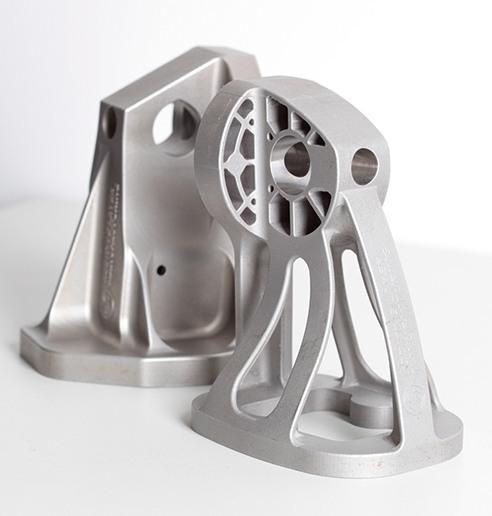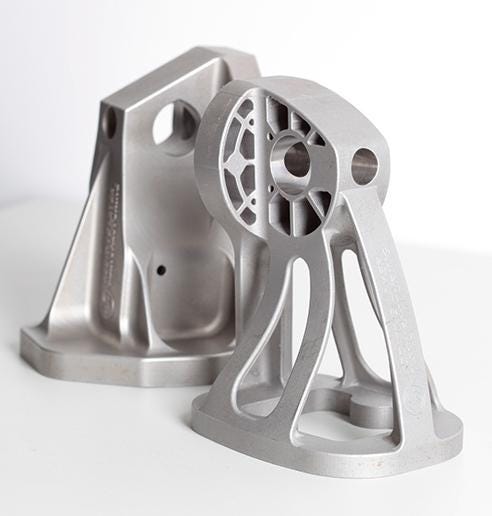ASTM Proposes New Standards for Metal 3D Printing
August 29, 2014

As we've often discussed, making high-quality end-production parts with additive manufacturing (AM) and 3D-printing methods will take some carefully defined standards and guidelines for machines and processes, materials, and printed parts. This is especially true for high-quality metal parts. The standards bodies are not standing still on this: They've already released a few and are working on others.
A new ASTM International working standard, WK46188, addresses powder bed fusion AM methods for metals. Titled "Practice for Metal Powder Bed Fusion to Meet Rigid Quality Requirements," it describes how powder bed fusion machines and processes can be operated, plus what production control methods need to be used, to meet the rigid quality standards of applications such as aerospace and medical. It's geared to developing the critical parameters needed for shifting processes originally developed to make prototypes, to become processes that can make safety-critical components for uses such as patient-specific medical implants and flight-worthy aircraft parts.

Like so many terms in 3D printing and AM, "powder bed fusion" can be defined in more than one way. The widest definition includes methods that use an electron beam or a laser to fuse, or melt, metal powders in a bed. AM types include electron beam melting, selective laser sintering, selective laser melting, and direct metal laser sintering. One of the handiest guides I've seen to 3D-printing/AM-processes can be found here.
The proposed ASTM standard will include requirements for both mechanical test specimens and final production parts, made with powder bed fusion methods that employ both laser and electron beam sources. The main target for WK46188 will be either Tier 1 and 2 suppliers setting up a facility for producing parts using powder bed fusion, or OEM engineers that can use these requirements as a guide for creating their own internal standards.
In July, ASTM released F3049, "Guide for Characterizing Properties of Metal Powders Used for Additive Manufacturing Processes." It's aimed at both users and makers of AM metal powders for high-performance applications like automotive, aerospace, and medical. A companion standard, WK43112, "Guide for Evaluating Mechanical Properties of Materials Made via Additive Manufacturing Processes," is in development.
Last fall, ASTM released the more specific F3001 that governs a version of Ti-6Al-4V: "Specification for Additive Manufacturing Titanium-6 Aluminum-4 Vanadium ELI (Extra Low Interstitial) With Powder Bed Fusion."
Another ASTM standard in development is WK40419, "Test Measurements for Performance Evaluation of Additive Manufacturing Systems Though Measurement of a Manufactured Test Piece." According to ASTM's description, WK40419 aims at developing a test method that describes "a benchmarking test piece along with quantitative and qualitative measurements to be taken on the benchmarking test piece to assess the performance of additive manufacturing (AM) systems. The benchmarking test piece is primarily used to quantitatively assess the geometric performance of an AM system."
Other efforts to standardize AM processes and materials include last fall's agreement between America Makes and ASTM to work together. Since America Makes has been pursuing parallel R&D all on its own, this memorandum of understanding makes a lot of sense. The agreement calls for America Makes to participate in the ASTM standards process for AM, which is currently being conducted by the standards body's Committee F42 on Additive Manufacturing Technologies.
America Makes has been funding several projects for developing guidelines and knowledgebases for AM and 3D-printing processes and equipment, including qualification and certification. Many of these projects concern metal processes and aerospace applications. Optomec, for example, is involved in several America Makes projects. One of these focuses on developing knowledge bases of deposition parameters for Ti-6Al-4V and IN718 (Inconel) using the company's LENS metal 3D printing process.
Related posts:
About the Author(s)
You May Also Like



